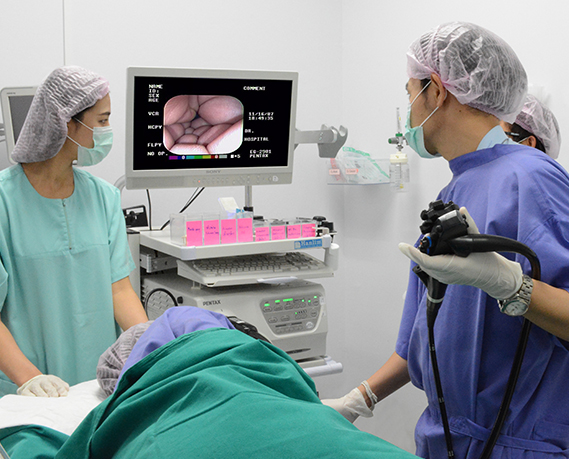Introduction
Have you ever wondered how doctors can examine the inside of your body without making big cuts? Endoscopy and Colonoscopy are two incredible procedures that allow doctors to see inside your digestive system without invasive surgery. Let’s take a closer look at Endoscopy and Colonoscopy and understand how these procedures work, explained in simple and easy-to-understand language.
What is Endoscopy?
Endoscopy is a medical procedure that uses a thin, flexible tube with a camera and light at the end, called an endoscope, to examine the inside of your body. The endoscope is like a tiny camera that provides real-time images of your digestive tract.

How does it work?
During Endoscopy, you will be given a mild sedative to help you relax. The doctor gently inserts the endoscope through your mouth or anus, depending on which part of the body needs to be examined. The endoscope then travels through your esophagus, stomach, or intestines, capturing detailed images along the way.
The doctor can view these images on a monitor, enabling them to identify any issues or abnormalities.
Why is it special?
Endoscopy is special because it allows doctors to diagnose and treat various digestive conditions, such as ulcers, inflammation, or growths, without the need for major surgery. It’s a safe and effective way to see inside your body and get the information needed to provide the best possible care.
What is Colonoscopy?
Colonoscopy is a type of Endoscopy specifically focused on examining the large intestine, also known as the colon.
How does it work?
During Colonoscopy, you will receive sedation to keep you comfortable throughout the procedure. The doctor gently inserts the colonoscope into your rectum and guides it through your colon. The camera at the end of the colonoscope transmits real-time images of the colon’s lining to a monitor.
Why is it special?
Colonoscopy is special because it is a powerful tool for detecting and preventing colorectal cancer. The procedure can identify and remove polyps (small growths) before they have a chance to develop into cancer, potentially saving lives.
Benefits of Endoscopy and Colonoscopy
- Minimally Invasive: Both procedures are minimally invasive, which means they cause less discomfort and have a quicker recovery time compared to surgery.
- Accurate Diagnoses: Endoscopy and Colonoscopy provide clear and detailed images, helping doctors make accurate diagnoses and design appropriate treatment plans.
- Preventive Care: Colonoscopy, in particular, can help prevent colorectal cancer by detecting and removing polyps early.
- Early Detection: Endoscopy and Colonoscopy can help detect health issues at an early stage, increasing the chances of successful treatment and better outcomes.

Conclusion
Endoscopy and Colonoscopy are remarkable procedures that offer a closer look inside your body, without the need for major surgery. These safe and effective methods allow doctors to diagnose and treat various digestive conditions, contributing to better overall health and well-being.
As medical technology continues to advance, we can expect even more innovative ways to explore and care for our bodies, promoting early detection and preventive care. Until then, we can appreciate the wonders of Endoscopy and Colonoscopy – a safe and comfortable journey into the inner workings of our digestive system.
